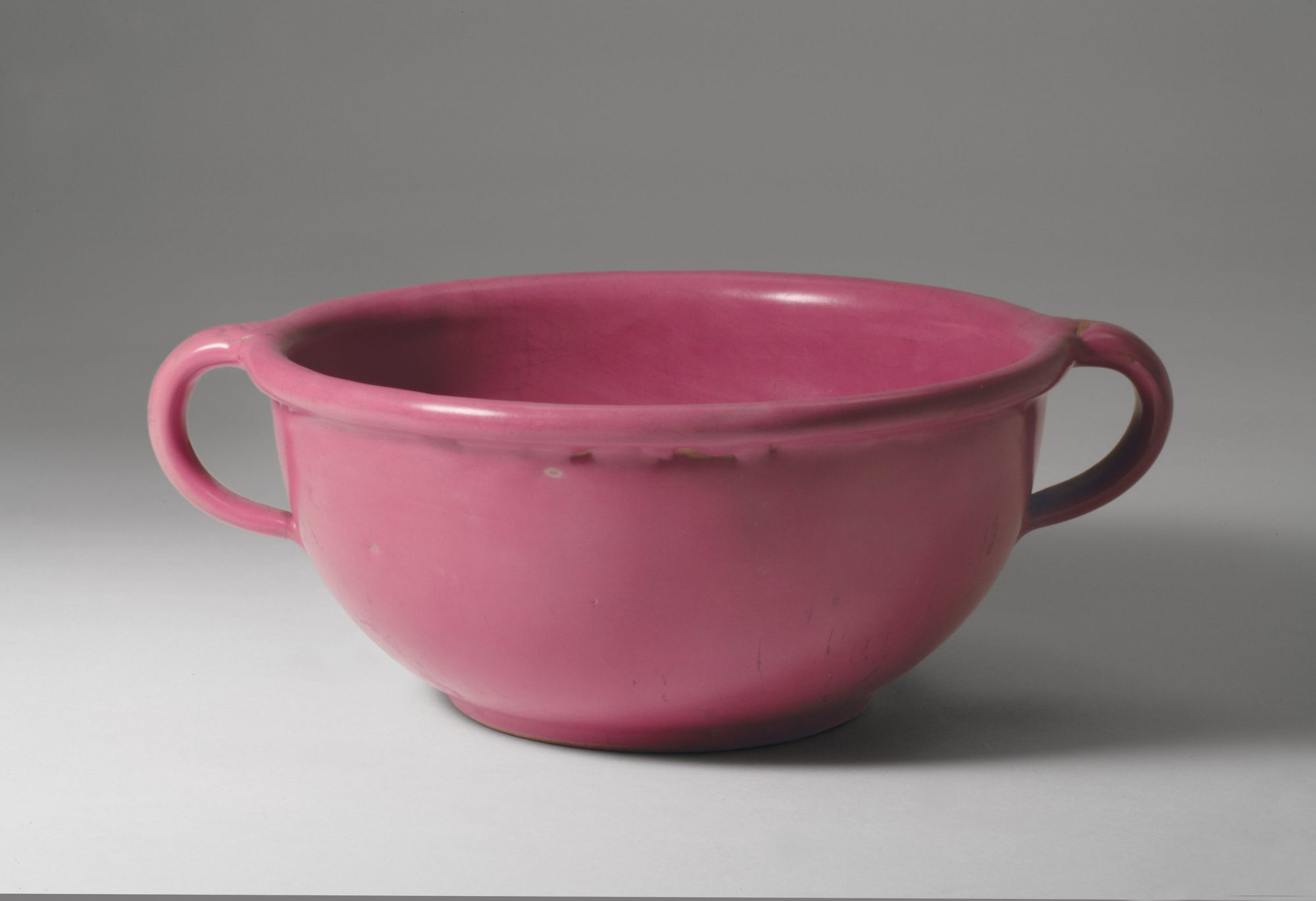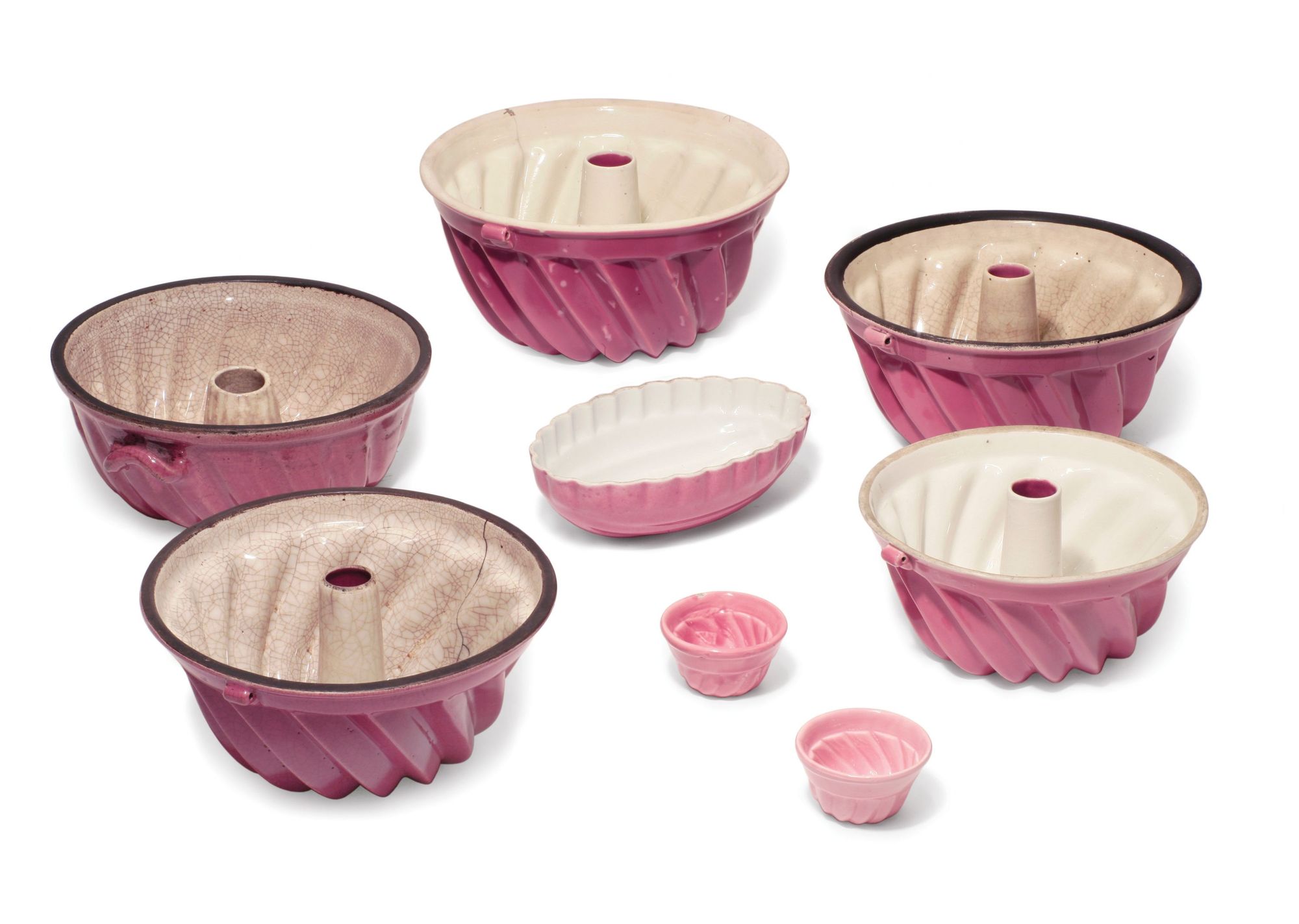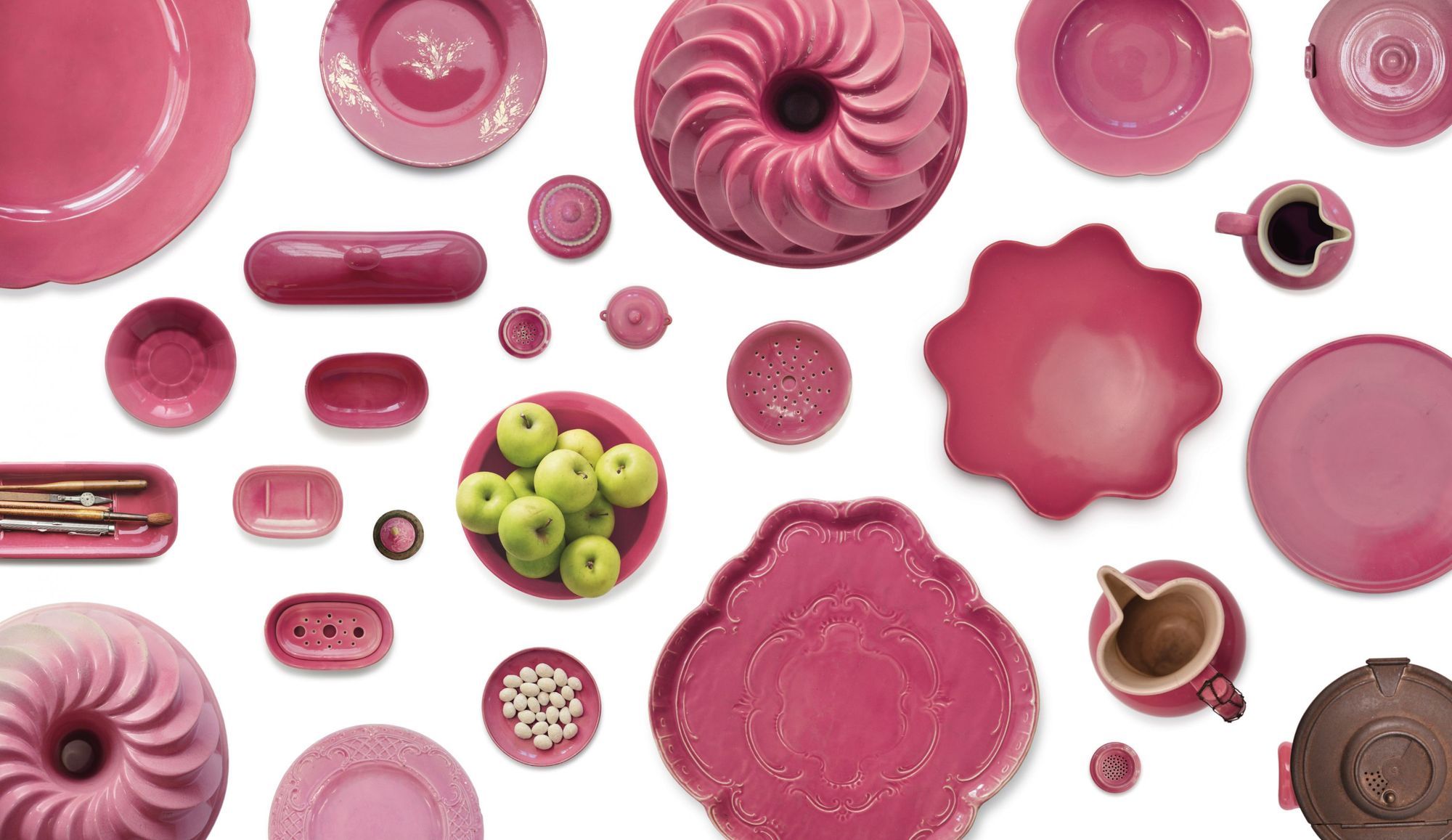For many of us, Zsolnay is known for its rich ornamentation and characterful, shimmering eosin glazed ceramics, but there is also a (perhaps) less well-known chapter in the history of the ceramics factory in Pécs. The recently published book “The Pink Zsolnay” tells the story of this pink era in a truly enjoyable way. We’ve already bought it and now we’re going to give you a sneak peek!


The new book by Ybl Prize-winning architect Barnabás Winkler was launched at FUGA last Friday evening, on 31 March, and the shop window was also dressed in pink. There has been a previous book about Winkler’s passion for collecting: the 2007 book “Kezdetben volt a rózsaszín” (In the beginning was the pink) which featured more than 500 pink Zsolnay ceramics. Today this number has jumped to 1500, and in December 2011 the unique collection was returned to its “hometown”, Pécs, where we can get familiar with the pink objects presented in a permanent exhibition—from the tube pans to the wine-, beer- and water pitchers, from the leavening bowls to the unique food containers.
Much to my sadness, I couldn’t attend the book launch at FUGA, but a few days later I snapped up a copy at the Írók Boltja—I was very much driven by my curiosity. I had the same image of Zsolnay as perhaps many have in their minds: glossy glazed statuettes, vases with exuberant decoration, in an almost kitschy interpretation. The only characters in the Zsolnay universe that I truly appreciate are the building decorating ceramics, which, perhaps of the dimensional shift, I think of as “easier to consume” than their representative, china cabinet-inhabiting counterparts.


I thought the subtitle “A special book not just for ceramics lovers” in the press material was just a sound bait, but as soon as I picked up the book, it proved to be true (at least it works for me). Of course, I have a reputation as an undeniable object-obsessive person, and although plastic is my biggest favorite, the Winklers’ book had me wrapped around its fingers in the blink of an eye.


The hefty, nearly 400-page Hungarian-English publication could have been a disappointment: it could have been come out as a dry volume, undoubtedly impeccable from an art-historical point of view, but perhaps also less reader-friendly. And it could have been a colorful and lively picture album full of sentimental stories, devoid of professionalism and only carefully listing the most important data and information on the subject. Fortunately, the authors and editors of “The Pink Zsolnay” have made neither mistake and thanks to the expertise of Teodora Hübner, the result is a visually enjoyable publication.



The use of the adjective “special” in connection with the book is very much reasonable. The book cleverly doses educational information and archive footage, outlining the complex history of Zsolnay and the history of the pink utensils produced from the 1850s to 1900. And much more. Because this volume not only tells about objects, it also tells stories, in a reader-friendly and entertaining way—that’s the book’s real superpower.



In fact, as we turn the pages, we see unfolding the personality of Barnabás Winkler, a passionate collector who tells the adventurous, twisted or touching story of the acquisition of each object. And how good that this perspective is explicitly expressed in this volume! After all, an object is not just a set of data (size, technique, time and place of creation, etc.), but a mystery to be solved, a secret, a tradition that becomes even more precious with time.


On the pages of “The Pink Zsolnay,” we find plenty of such stories: we discover, among other things, how does the first tube pan found its way into the collection, what did a hidden corner of a few hundreds of square meters antique shop in Brussels hold for Winkler and what object was bequeathed to the collector by Auntie Lonci in Sopron. But we can also get to know Boris, the old antique dealer of the Ecseri market, and the story of the “shabby little jug,” or the so-called giant, the 30-liter “Balaton” bucket.


And of course, Winkler also tells us how and which pink piece started his passion for collecting—he says he has never collected anything, not bugs, not plants, not even stamps, but the pink Zsolnay somehow appealed to him and he hasn’t let go of it since.

Of course, besides the personal stories and memories, there are also many interesting facts about the pink ceramics. Born as an adaptation of rustic utensils, the group was also very popular in middle-class homes and was a wonder to behold at the 1873 Vienna World Exhibition. For example, the book reminds us how different people’s relationship with objects was a hundred and fifty years ago: a pot or a jug was still important then, it had to be saved (thanks to the “tinkers”); both rural and urban people loved to use them, while they were protecting and preserving their household utensils. One family, for example, had a tinker make a copper lid for their wine jug, while another sealed the grease pit with an iron lid. This can be a valuable lesson for today’s man, especially with regard to the slow life movement, while the utterly unsuspecting reader can also learn how to distinguish between a wine jug and a water jug (based on shape), what made the beer jug called “Bartkopf” so special, or what ingenious solutions the craftsmen of the time came up with when it came to designing the lugs of a water jug.
The book is available at FUGA and the Írók Boltja and will soon be available in major bookshops.

Text: Barnabás Winkler, Orsolya Kovács
Design and graphics: Teodóra Hübner
Photos: Teodóra Hübner, Attila Polgár, Nóra Bege
Editor: Zsuzsa Gáspár
Reading editor: Macó Sződy
English translation: Bob Dent, Katalin Rácz
Publisher: Hap Galéria, Budapest, 2022

Swedish architecture studio designs prototype town hall in Ukraine

Dubai has turned into a jungle










